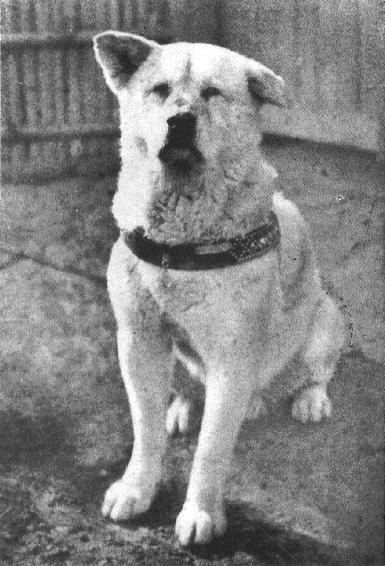Sunday, October 17, 2010
Hachiko: A Testimony of Love
Adapted from Wikipedia

Hachikō (ハチ公, November 10, 1923–March 8, 1935), known in Japanese as chūken Hachikō (忠犬ハチ公, "faithful dog Hachikō" ('hachi' meaning 'eight', a number referring to the dog's birth order in the litter, and 'kō,' meaning prince or duke)), was an Akita dog born on a farm near the city of Ōdate, Akita Prefecture,[1] remembered for his loyalty to his owner, even many years after his owner's death.
In 1924, Hidesaburō Ueno, a professor in the agriculture department at the University of Tokyo took in Hachikō as a pet. During his owner's life Hachikō greeted him at the end of the day at the nearby Shibuya Station. The pair continued their daily routine until May 1925, when Professor Ueno did not return. The professor had suffered from a cerebral hemorrhage and died, never returning to the train station where his friend was waiting. Every day for the next nine years Hachikō waited at Shibuya station.
Hachikō was given away after his master's death, but he routinely escaped, returning again and again at his old home. Eventually, Hachikō apparently realized that Professor Ueno no longer lived at the house. So he went to look for his master at the train station where he had accompanied him so many times before. Each day, Hachikō waited for the return of his owner.
The permanent fixture at the train station that was Hachikō attracted the attention of other commuters. Many of the people who frequented the Shibuya train station had seen Hachikō and Professor Ueno together each day. They brought Hachikō treats and food to nourish him during his wait.
This continued for nine years with Hachikō appearing precisely when the train was due at the station.[2]
Publication
That same year, one[who?] of Ueno's students (who had become an amateur expert on the Akita breed) saw the dog at the station and followed him to the Kobayashi home (the home of the former gardener of Professor Ueno — Kikuzaboro Kobayashi[3]) where he learned the history of Hachikō's life. Shortly after this meeting, the former student published a documented census of Akitas in Japan. His research found only 30 purebred Akitas remaining, including Hachikō from Shibuya Station.
He returned frequently to visit the dog and over the years published several articles about Hachikō's remarkable loyalty. In 1932 one of these articles, published in Tokyo's largest newspaper[who?], threw the dog into the national spotlight. Hachikō became a national sensation. His faithfulness to his master's memory impressed the people of Japan as a spirit of family loyalty all should strive to achieve. Teachers and parents used Hachikō's vigil as an example for children to follow. A well-known Japanese artist rendered a sculpture of the dog, and throughout the country a new awareness of the Akita breed grew.
Eventually, Hachiko's legendary faithfulness became a national symbol of loyalty.
Death
Hachikō died on March 8, 1935 and was found on a street in Shibuya.[4] His heart was infected with filarial worms and 3-4 yakitori sticks were found in his stomach.[5]
His stuffed and mounted remains are kept at the National Science Museum of Japan in Ueno, Tokyo.[6]
Subscribe to:
Post Comments (Atom)
No comments:
Post a Comment